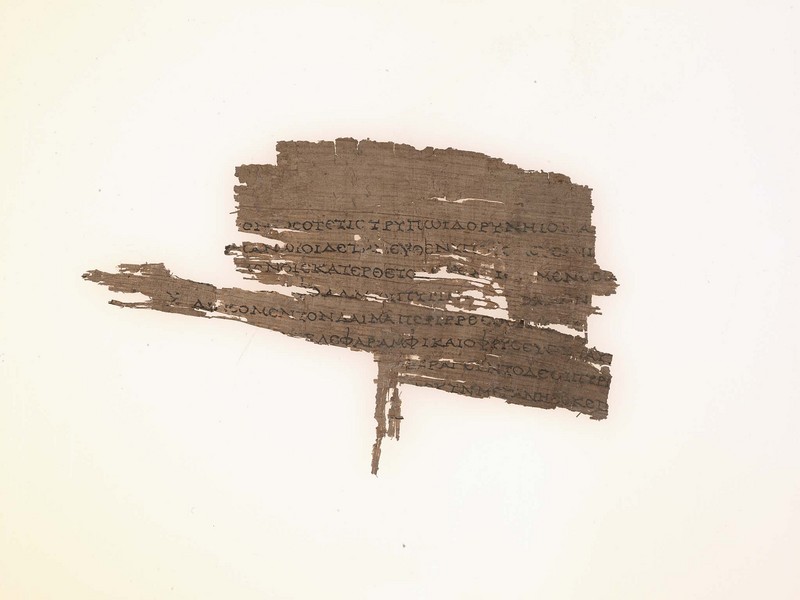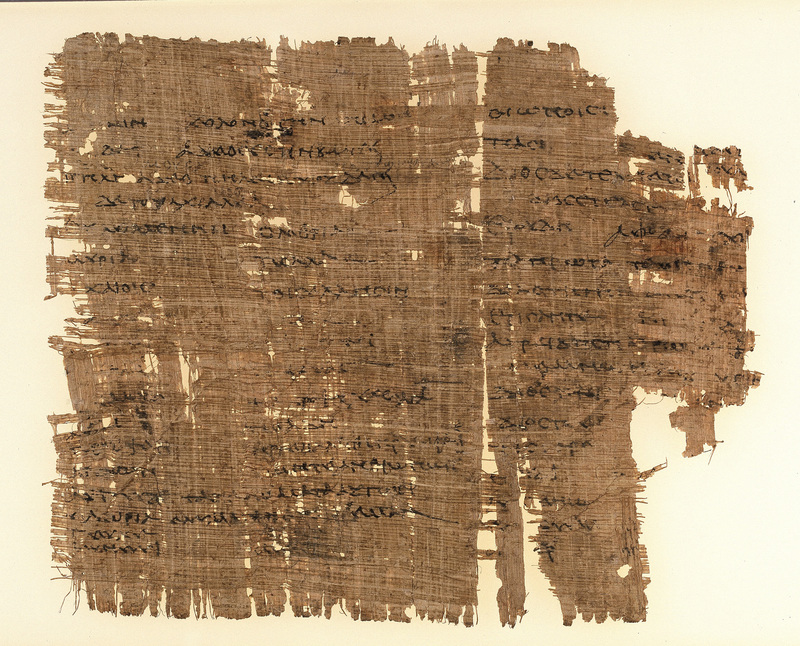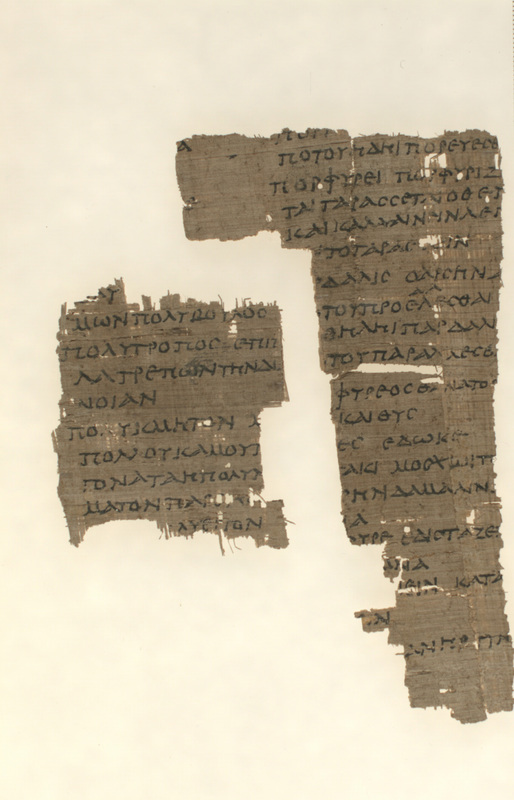Interpreting Homer
The pervasive role of Homer in ancient education is attested by a large number of extant texts dealing with the language and cultural background of the poems. These texts belong to a larger conceptual category known as scholia minora, which in turn consist of marginal and interlinear commentaries, glossaries, lexica, and summaries. Essentially, they were all designed to aid teachers and students of Homer. The papyrus fragment on your right contains a glossary to the first nine lines of the first book of the Iliad. In brief, a glossary is a list of words or lemmata arranged in the order of their appearance in the poem. Each word is accompanied by a gloss containing its literal, or quasi-literal interpretation. For instance, the first line of the first two columns defines the term μῆνις (wrath) as follows:
(μη)νιν χολον ο(ρ)γην (θ)υμον
wrath: bile, natural impulse, mind.
On your right are two papyrus fragments of a lexicon found in the excavation at Karanis during the season of 1928-29. They contain entries dealing with Homeric words in πολυ-, πορ-, and ποσ-. The format of this papyrus closely resembles that of the glossary described above. The lemmata and their respective glosses are written together in a single column. If the gloss extends to the following line, this is indicated by an indentation of one letter-width. A gap of several letters also separates the words from the definitions. For instance, the first two lines of the fragment on the left can be transcribed as follows:
(πο)λυ(μητις πολυγνω)
μων πολυβοθλος
of many counsels: very
sagacious, much-counseling.
It is very possible that the Michigan papyrus is an almost contemporary witness of the work of the Alexandrian scholar Apollonius Sophista (second half of the first century C.E.). Indeed, much of the content of these two fragments can be also read in the only surviving medieval manuscript that contains Apollonius's lexicon: the tenth-century Codex Coislinianus 345.
The main scholars responsible for the textual transmission of Homer in the Library of Alexandria, founded in the early third century B.C.E., were Zenodotus of Ephesus (fl. 280 B.C.E), Aristophanes of Byzantium, head of the library at the beginning of the second century B.C.E., and Aristarchus of Samothrace, whose edition, the most influential of the three, is dated in the middle of the second century B.C.E. While all these three editions are now lost, traces of them can be read in scholia (commentaries) preserved in papyrus fragments and medieval manuscripts. In 1788, Jean Baptiste Gaspard d'Ansse de Villoison published an edition of the tenth-century codex manuscript of the Iliad known as Venetus A. Richly annotated on the margins and between the verses, at the end of almost all 24 books Venetus A includes a note on authorship (subscriptio), listing the names and roles of the four editors: Didymus (second half of the first century B.C.E) on variant readings; Aristonicus (second half of the first century B.C.E.); on critical signs; Nicanor (second century C.E.) on punctuation; and Herodian (second half of the second century C.E.) on accent. In fact, these four scholars heavily relied on Aristarchus's edition, as attested by more than 1,000 references to him.

Papyri of the Odyssey



